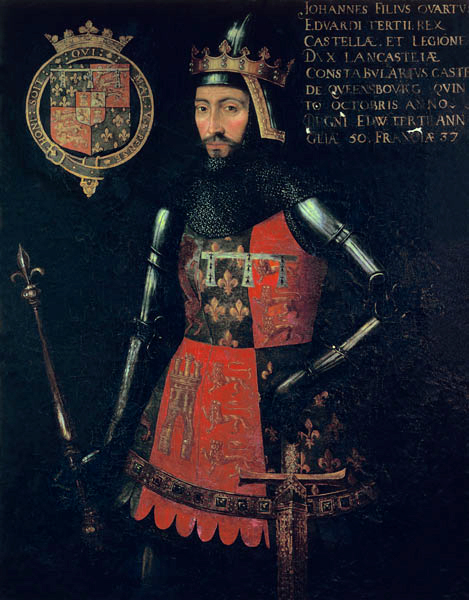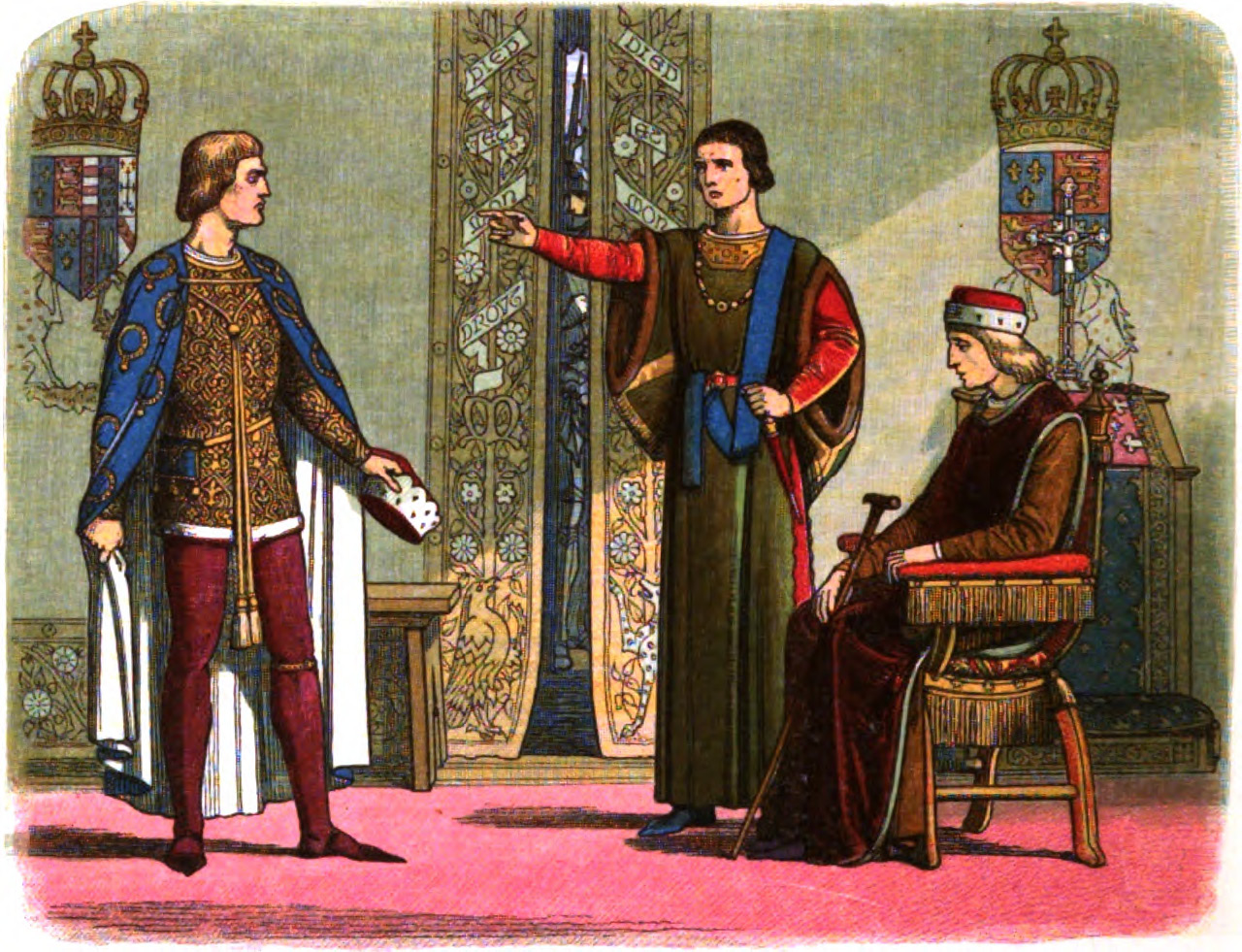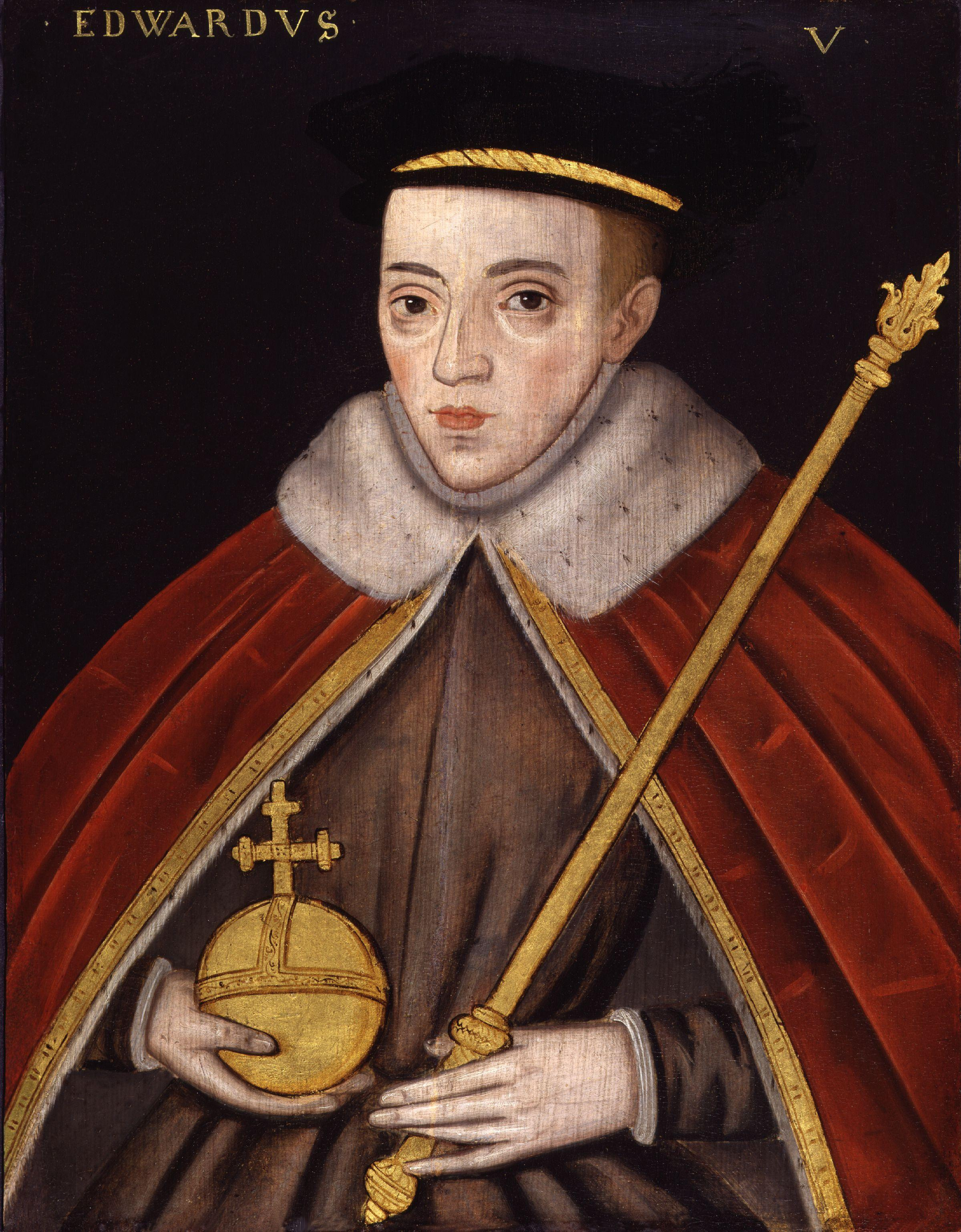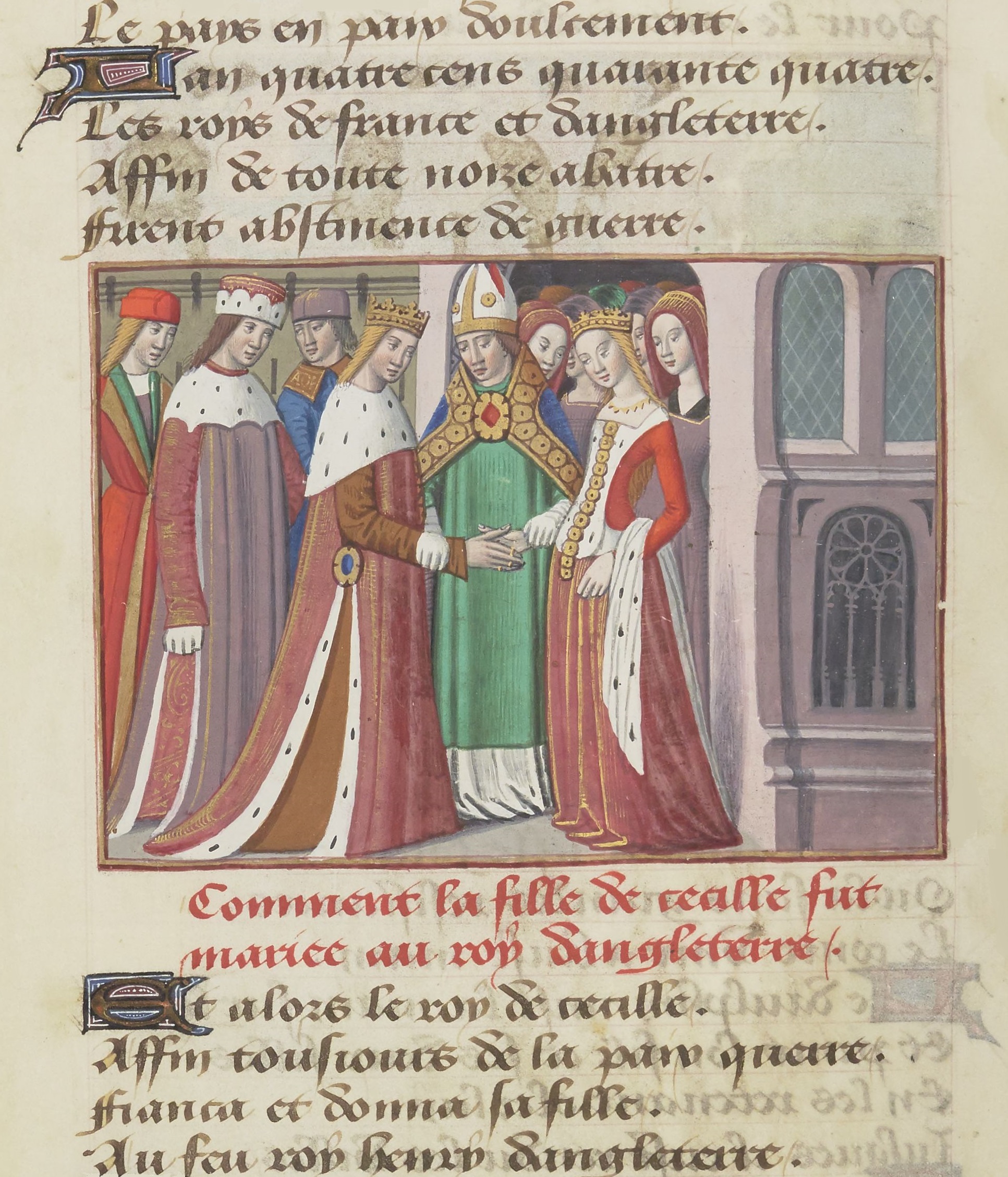|
Wars Of The Roses
The Wars of the Roses, known at the time and in following centuries as the Civil Wars, were a series of armed confrontations, machinations, battles and campaigns fought over control of the English throne from 1455 to 1487. The conflict was fought between supporters of the House of Lancaster and House of York, two rival cadet branches of the royal House of Plantagenet. The conflict resulted in the end of Lancaster's male line in 1471, leaving the Tudors of Penmynydd, Tudor family to inherit their claim to the throne through the female line. Conflict was largely brought to an end upon the union of the two houses through marriage, creating the Tudor dynasty that would subsequently rule England. The Wars of the Roses were rooted in English socio-economic troubles caused by the Hundred Years' War (1337–1453) with France, as well as the quasi-military bastard feudalism resulting from the powerful duchies created by King Edward III. The mental instability of King Henry VI of Englan ... [...More Info...] [...Related Items...] OR: [Wikipedia] [Google] [Baidu] |
Edmund Beaufort (died 1471)
Edmund Beaufort (c. 1438 – 6 May 1471), styled 4th Duke of Somerset, 6th Earl of Somerset, 3rd Marquess of Dorset, 3rd Earl of Dorset, was an English nobleman, and a military commander during the Wars of the Roses, in which he supported the House of Lancaster, Lancastrian King Henry VI of England, Henry VI. Life Edmund Beaufort, born about 1438, was the second son of Edmund Beaufort, 2nd Duke of Somerset by his wife Eleanor Beauchamp, Duchess of Somerset, Eleanor de Beauchamp, a daughter of Richard Beauchamp, 13th Earl of Warwick and widow of Thomas de Roos, 14th Baron Roos of Hamlake. His elder brother was Henry Beaufort, 3rd Duke of Somerset (26 January 1436 – 15 May 1464). After the defeat of the Lancastrians in 1461, Edmund was brought up in Kingdom of France, France with his younger brother John Beaufort, Marquess of Dorset, and on the execution of his elder brother Henry Beaufort, 3rd Duke of Somerset after the Battle of Hexham in 1464, Edmund is said to have succeeded ... [...More Info...] [...Related Items...] OR: [Wikipedia] [Google] [Baidu] |
House Of York
The House of York was a cadet branch of the English royal House of Plantagenet. Three of its members became kings of England in the late 15th century. The House of York descended in the male line from Edmund of Langley, 1st Duke of York, the fourth surviving son of Edward III. In time, it also represented Edward III's senior line, when an heir of York married the heiress-descendant of Lionel, Duke of Clarence, Edward III's second surviving son. It is based on these descents that they claimed the English crown. Compared with its rival, the House of Lancaster, it had a superior claim to the throne of England according to cognatic primogeniture, but an inferior claim according to agnatic primogeniture. The reign of this dynasty ended with the death of Richard III of England at the Battle of Bosworth Field in 1485. It became extinct in the male line with the death of Edward Plantagenet, 17th Earl of Warwick, in 1499. Descent from Edward III The fourth surviving legi ... [...More Info...] [...Related Items...] OR: [Wikipedia] [Google] [Baidu] |
Female Line
Matrilineality, at times called matriliny, is the tracing of kinship through the female line. It may also correlate with a social system in which people identify with their matriline, their mother's lineage, and which can involve the inheritance of property and titles. A matriline is a line of descent from a female ancestor to a descendant of either gender in which the individuals in all intervening generations are mothers. In a matrilineal descent system, individuals belong to the same descent group as their mothers. This is in contrast to the currently more popular pattern of patrilineal descent from which a family name is usually derived. The matriline of historical nobility was also called their enatic or uterine ancestry, corresponding to the patrilineal or "agnatic" ancestry. Early human kinship Scholars disagree on the nature of early human, that is, Homo sapiens, kinship. In the late 19th century, most scholars believed, influenced by Lewis H. Morgan's book ' ... [...More Info...] [...Related Items...] OR: [Wikipedia] [Google] [Baidu] |
Tudors Of Penmynydd
The Tudors of Penmynydd () were a noble and aristocratic family, connected with the village of Penmynydd in Anglesey, North Wales, who were very influential in Welsh (and later English) politics. From this family arose Owen Tudor, Sir Owen Tudor and thereby the House of Tudor, Tudor dynasty, that ruled the Kingdom of England from 1485 to 1603. The Tudor dynasty ended in the early 17th century with the death of Elizabeth I. Origin and early generations The family descended from one of the sons of Ednyfed Fychan (died in 1246), the Welsh people, Welsh warrior who became seneschal to the Kingdom of Gwynedd in north Wales, serving Llywelyn the Great and later his son Dafydd ap Llywelyn. He claimed descent from Marchudd ap Cynan, Lord of Rhos and 'protector' of Rhodri the Great, king of Gwynedd, a founder of one of the so-called Fifteen Tribes of Wales. From Ednyfed's many sons would come a 'ministerial aristocracy' in northern Wales. He left the manors of Trecastell, Penmynydd an ... [...More Info...] [...Related Items...] OR: [Wikipedia] [Google] [Baidu] |
Male Line
Patrilineality, also known as the male line, the spear side or agnatic kinship, is a common kinship system in which an individual's family membership derives from and is recorded through their father's lineage. It generally involves the inheritance of property, rights, names, or titles by persons related through male kin. This is sometimes distinguished from cognate kinship, through the mother's lineage, also called the spindle side or the distaff side. A patriline ("father line") is a person's father, and additional ancestors, as traced only through males. In the Bible In the Bible, family and tribal membership appears to be transmitted through the father. For example, a person is considered to be a priest or Levite, if his father is a priest or Levite, and the members of all the Twelve Tribes are called Israelites because their father is Israel (Jacob). In the first lines of the New Testament, the descent of Jesus Christ is counted through the male lineage from Abraham throug ... [...More Info...] [...Related Items...] OR: [Wikipedia] [Google] [Baidu] |
House Of Plantagenet
The House of Plantagenet (Help:IPA/English, /plænˈtædʒənət/ Help:Pronunciation respelling key, ''plan-TAJ-ə-nət'') was a royal house which originated from the Medieval France, French county of Anjou. The name Plantagenet is used by modern historians to identify four distinct royal houses: the Angevin kings of England, Angevins, who were also counts of Anjou; the main line of the Plantagenets following the loss of Anjou; and the Houses of House of Lancaster, Lancaster and House of York, York, two of the Plantagenets’ Cadet branch, cadet branches. The family held the English throne from 1154, with the accession of Henry II of England, Henry II, until 1485, when Richard III of England, Richard III died in battle. England was transformed under the Plantagenets, although only partly intentionally. The Plantagenet kings were often forced to negotiate compromises such as Magna Carta, which constrained royal power in return for financial and military support. The king was no ... [...More Info...] [...Related Items...] OR: [Wikipedia] [Google] [Baidu] |
Cadet Branches
A cadet branch consists of the male-line descendants of a monarch's or patriarch's younger sons ( cadets). In the ruling dynasties and noble families of much of Europe and Asia, the family's major assets (realm, titles, fiefs, property and income) have historically been passed from a father to his firstborn son in what is known as primogeniture; younger sons, the cadets, inherited less wealth and authority (such as a small appanage) to pass on to future generations of descendants. In families and cultures in which that was not the custom or law, such as the feudal Holy Roman Empire, the equal distribution of the family's holdings among male members was eventually apt to so fragment the inheritance as to render it too small to sustain the descendants at the socio-economic level of their forefather. Moreover, brothers and their descendants sometimes quarreled over their allocations, or even became estranged. While agnatic primogeniture became a common way of keeping the family's ... [...More Info...] [...Related Items...] OR: [Wikipedia] [Google] [Baidu] |
English Throne
The Throne of England is the throne of the Monarch of England. "Throne of England" also refers metonymically to the office of monarch, and monarchy itself.Gordon, Delahay. (1760) ''A General History of the Lives, Trials, and Executions of All the Royal and Noble Personages, that Have Suffered in Great-Britain and Ireland for High Treason, Or Other Crimes: From the Accession of Henry VIII. to the Throne of England, Down to the Present Time,'' p. 55./ref> The term "Throne of Great Britain" has been used in reference to Sovereign's Throne in the House of Lords, from which a monarch gives his or her speech at the State opening of Parliament. History The English Throne is one of the oldest continuing hereditary monarchies in the world. In much the same sense as The Crown, the Throne of England becomes an abstract metonymic concept that represents the legal authority for the existence of the government. It evolved naturally as a separation of the literal throne and property of th ... [...More Info...] [...Related Items...] OR: [Wikipedia] [Google] [Baidu] |
Richard Of York, 3rd Duke Of York
Richard of York, 3rd Duke of York (21 September 1411 – 30 December 1460), also named Richard Plantagenet, was a leading English magnate and claimant to the throne during the Wars of the Roses. He was a member of the ruling House of Plantagenet by virtue of being a direct male-line descendant of Edmund of Langley, King Edward III's fourth surviving son. However, it was through his mother, Anne Mortimer, a descendant of Edward III's second surviving son, Lionel of Antwerp, that Richard inherited his strongest claim to the throne, as the opposing House of Lancaster was descended from John of Gaunt, Duke of Lancaster, the third surviving son of Edward III. He also inherited vast estates and served in various offices of state in Ireland, France and England, a country he ultimately governed as Lord Protector due to the mental instability of King Henry VI. Richard's conflicts with Henry's wife, Margaret of Anjou, and other members of Henry's court, such as Edmund Beaufort, ... [...More Info...] [...Related Items...] OR: [Wikipedia] [Google] [Baidu] |
Richard III
Richard III (2 October 1452 – 22 August 1485) was King of England from 26 June 1483 until his death in 1485. He was the last king of the Plantagenet dynasty and its cadet branch the House of York. His defeat and death at the Battle of Bosworth Field marked the end of the Middle Ages in England. Richard was created Duke of Gloucester in 1461 after the accession to the throne of his older brother Edward IV. This was during the period known as the Wars of the Roses, an era when two branches of the royal family contested the throne; Edward and Richard were Yorkists, and their side of the family faced off against their House of Lancaster, Lancastrian cousins. In 1472, Richard married Anne Neville, daughter of Richard Neville, 16th Earl of Warwick, and widow of Edward of Westminster, son of Henry VI of England, Henry VI. He governed northern England during Edward's reign, and played a role in the English invasion of Scotland (1482), invasion of Scotland in 1482. When Edward IV died ... [...More Info...] [...Related Items...] OR: [Wikipedia] [Google] [Baidu] |
Edward V
Edward V (2 November 1470 – ) was King of England from 9 April to 25 June 1483. He succeeded his father, Edward IV, upon the latter's death. Edward V was never crowned, and his brief reign was dominated by the influence of his uncle and Lord Protector, the Duke of Gloucester, who deposed him to reign as King Richard III; this was confirmed by the ''Titulus Regius'', an Act of Parliament which denounced any further claims through Edward IV's heirs by delegitimising Edward V and all of his siblings. This was later repealed by Henry VII, who subsequently married Elizabeth of York, Edward V's eldest sister. Edward V and his younger brother, Richard of Shrewsbury, are known as the Princes in the Tower. They disappeared after being sent to heavily guarded royal lodgings in the Tower of London. Responsibility for their disappearance (and presumed deaths) is widely attributed to Richard III, who sent them to the Tower, but the lack of conclusive evidence and conflicting contempora ... [...More Info...] [...Related Items...] OR: [Wikipedia] [Google] [Baidu] |
Margaret Of Anjou
Margaret of Anjou (; 23 March 1430 – 25 August 1482) was Queen of England by marriage to King Henry VI from 1445 to 1461 and again from 1470 to 1471. Through marriage, she was also nominally Queen of France from 1445 to 1453. Born in the Duchy of Lorraine into the House of Valois-Anjou, Margaret was the second eldest daughter of René of Anjou King of Naples, and Isabella, Duchess of Lorraine. Margaret was one of the principal figures in the series of dynastic civil wars known as the Wars of the Roses and at times personally led the Lancastrian faction. Some of her contemporaries, such as the Duke of Suffolk, praised "her valiant courage and undaunted spirit" and the 16th-century historian Edward Hall described her personality in these terms: "This woman excelled all other, as well in beauty and favour, as in wit and policy, and was of stomach and courage, more like to a man, than a woman". Owing to her husband's frequent bouts of insanity, Margaret ruled the kingdom ... [...More Info...] [...Related Items...] OR: [Wikipedia] [Google] [Baidu] |





